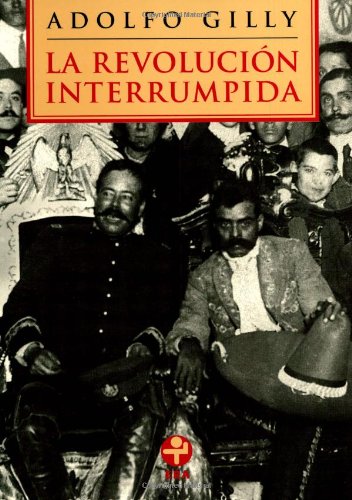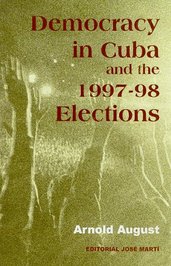In 1978, China was impoverished, with 100 million people with insufficient food, and it was exhausted by the political conflicts of the Cultural Revolution (see “The Cultural Revolution in China” 1/25/2018). Although Maoists had been removed from influence in the Central Committee, the Chinese leadership in 1978 did not opt for the Soviet model, which previously had been a source of conflict with Mao (see “The emergence of Maoism” 1/18/2018). Aware of the limitations of socialism in the Soviet Union, the Chinese leadership rejected the European socialist way, or what could be called the classic socialist model. Instead, they turned to the example of the Asian tigers, which had forged dynamic economies through a strong state role in an export-oriented economy (Díaz, 2010:33-35).
Reforms in agriculture. The Reform and Opening sought to increase agricultural production by establishing structures that would facilitate the expansion of family farms and that would reward higher levels of production. The price paid for cereals was increased, and the costs to peasants of fertilizers and pesticides were reduced. The state introduced family contracts, which granted rights to families for the use of state-owned land, and which specified the crops and their quantity as well as the prices to be paid by the state. Peasants were permitted to sell any surplus production beyond the contract in an expanded free market for agricultural products. In 1999, a further reform permitted inheritance of family contracts as well as the use of salaried labor, with a maximum of seven laborers. These measures struck at the heart of the system of agricultural cooperative, which had been established during 1955 and 1956 as a key part of the transition to socialism. They were driven by economic considerations, and the urgent need to increase production, taking into account that growth in agricultural production had been stagnant, not sufficient to satisfy the demands of a growing and increasingly urbanized population. The measures were effective in attaining their goal of expanding production. There was constant growth in animal and livestock production from 1980 to 2003, and increase in the income of peasants, but with inequality (Díaz, 2010:37-47).
Restructuring the industrial sector. Since 1978, the reforms have been oriented to giving state-owned companies greater autonomy, and expanding the space for private capital. These measures have enabled Chinese companies to adapt to continually changing technical and scientific requirements, and they have been successful in promoting a significant expansion in industrial production. State companies remain, however, the pillar of the economy. As of 2012, state companies comprised 63% of the 500 largest national firms, with 90% of the capital of said firms (Díaz, 2010:48-54, 101; Díaz, 2016:119-20, 143; Wu and Wang, 2104:149-50, 190).
Expansion of foreign investments in China. The modernization of the economy required levels of investment beyond the reach of national capacity. China thus turned to attracting foreign investment, a central component of the so-called “opening” of the economy. From 1979 to 1995, various structures were established: Special Economic Zones, Zones of Economic and Technological Development, Duty-Free Zones, and Zones of Industrial Development of High- and New Technologies. These structures have enabled a significant increase in foreign investment, in which 185 nations of the world have participated, in one form or another. Although direct foreign investment takes various forms, joint ventures formed by the Chinese state with private capital are the most important (Díaz, 2010:55-61).
Foreign investment created a rapid and sustained growth of the GNP in China. The government has channeled the resources proceeding from foreign investment toward the creation of a productive base and the modernization of the economy, in accordance with its plan, thus effectively addressing the problem of insufficient funding for modernization. Moreover, as it employed international capital, China did so in accordance with intelligent long-range guidelines, such as not contracting external debts that would place in danger the capacities of the nation. The Cuban scholar Julio Díaz Vázquez maintains that China has created an effective system for the absorption of international resources in various stages, unique in the Third World and never imagined in real socialism (Díaz, 2010:61-63; 2016:98).
Growth in international commerce. In 2008, Chinese exports were 147 times what they had been in 1978; importations were 104 times what they had been. As international commerce grew, it was moving away from the peripheral role in the world-economy: Traditional raw materials comprised more than 50% of exports in 1980, but only 10% in 2008; manufactured articles reached 90% of exports in 2008. This is consistent with trends in the world-economy, where there has emerged during the last fifty years low-wage export manufacturing from peripheral and semiperipheral zones. However, in the case of China, unlike other peripheral and semi-peripheral nations, the zones of export manufacturing are controlled and regulated by the state, and the state is a joint owner. As a result, a significant amount of the generated capital does not leave the country, but is invested in the modernization and development of the country, and it is used for the alleviation of inequality (Díaz, 2010:65-68; 2016:100-2).
Cooperation in foreign policy. At the beginning of the twentieth century, the European colonial empires and the American, Japanese, and Russian empires were in competition for control of the raw materials, labor, and markets of the earth. The quest by all empires for expansion led to two world wars, and the period culminated with U.S. hegemony in a world-system that had evolved to neocolonialism. During the rise of the United States to hegemony and the global transition to neocolonialism, the world-system reached and overextended the geographical limits of the earth, which created a situation in which the world-system could not be sustained without fundamental structural changes, involving a cessation of competition among empires for control of land, resources, and markets. Therefore, the world-system today needs a fundamental transformation of the foreign policy assumptions of the global powers. However, the United States and the ex-colonial powers of Europe continue to pursue the antiquated policies of seeking to expand their spheres of control and influence.
China is forging a foreign policy that is an alternative to the assumptions and concepts of the foreign policies of the European colonial empires, the ex-colonial powers, and U.S. imperialism; and that is consistent with the objective needs of the world-system today. Chinese foreign policy, formulated in theory and emerging is practice, respects the full sovereignty of all nations. It affirms that all nations of the world are free to control their economies, their political systems, and their foreign policies, and they are free to trade among themselves, without interferences and interventions by global powers seeking control of resources and markets. In accordance with this perspective, China peacefully and silently is challenging the United States and Europe, seeking to ascend in a form that changes the rules, thus moving the world-system toward cooperation and mutually beneficial trade. Accordingly, China is promoting an approach to international affairs that the Non-Aligned Movement and the more independent governments of the Third World have demanded since the 1960s. In pursuit of this goal, China has significantly expanded its commercial and diplomatic ties with Latin America since 1980 (Díaz, 2010:97-99, 104-5; Díaz, 2016:7-8, 73, 103; Wu and Wang, 2014:264-65).
China since 1978, therefore, has become a force in the world, with an expanding economy and an increasingly important role in the world economy, promoting in practice alternative guidelines in international affairs. But do these reforms in agriculture, industry, international commerce, and foreign policy signify an abandonment of socialism? We will pursue this question in our next post.
Díaz Vázquez, Julio Aracelio. 2010. China: ¿Otro Socialismo? (LX aniversario). La Habana: Editorial de Ciencias Sociales.
__________. 2016. China: Economía y democratización. La Habana: Editorial de Ciencias Sociales
Wu Li and Wang Lei. 2014. China, 1949-2014. Beijing: Beijing Times Chinese Press.






 RSS Feed
RSS Feed





